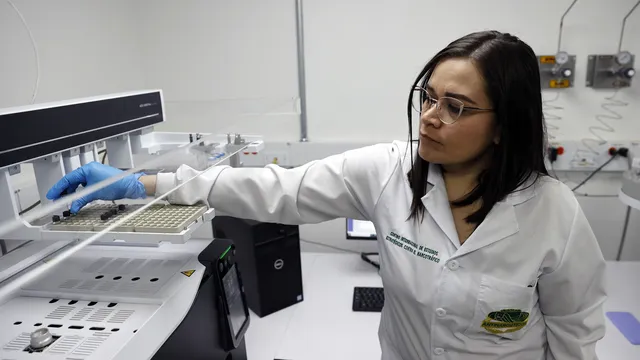But that wasn't always the case. Ketchup has a little-known history. Before ending up on your plate, the famous tomato-based sauce was actually... medicine. And as you will see, in the 19th century, people had a lot of imagination and little scientific knowledge, according to the Slate website.
Let's go back a little.
In the 18th century, British sailors brought back a fermented sauce from the Orient that they found as strange as it was delicious: ketchup. This mixture of fish brine, oysters, spices, and soy had almost nothing in common with today's red sauce... and didn't even contain tomatoes.
And yet, it was this strange mixture that became the ketchup we know today. After only a slight change, in which the exotic ingredients were replaced with local products, led by shallots and mushrooms. The sauce lived quietly and peacefully until the beginning of the 19th century, when... tomatoes were added. Eureka!
So far, so good, you might say. But in 1830, everything went wrong. American doctor Dr. John Cook Bennett saw a medical application for the latest version of the sauce. Why? Because this chairman of the medical faculty at Willoughby University in Ohio was convinced of the healing properties of tomatoes, which he considered extremely effective against jaundice, digestive problems, indigestion, and... diarrhea.
Dr. John Cook Bennett could have simply recommended eating tomatoes. But that would have been too simple. Instead, he preferred to concentrate their benefits in a more practical form: ketchup-based pills.
In 1834, ketchup pills appeared on the shelves of American pharmacies. In no time, competitors launched other versions of these little pills, going so far as to claim that they relieved rheumatism and cured the flu. A nice combination of lies?
On closer inspection, the tomato does have some benefits. For example, the presence of lycopene, an antioxidant, has benefits for the body... But apart from exaggerating its healing properties, that's about it!
And if we look specifically at ketchup, the presence of lycopene is almost negligible (unlike sugar, which predominates in modern industrial versions). Since its therapeutic use is zero, the medical fad gradually faded away before being completely abandoned.
It wasn't until 1876 that ketchup made a comeback in full force. No longer as a remedy for diarrhea, but as a condiment.
Henry John Heinz, who founded the famous food company of the same name, perfected the recipe by adding a large amount of sugar, which not only softened the taste but also helped to preserve the sauce better.
This revamped version brought him worldwide success, reaching Europe in 1886, first in London, and then... in 1944 in Paris, in the suitcases of American soldiers.
The history of ketchup is far from unique. Worse still, there are products we consume today with even more incredible stories behind them.
You probably know the story of Coca-Cola, which was once sold as a brain stimulant and a remedy for migraines. A kind of tonic... which worked really well!
And not without reason, since until the beginning of the 20th century it contained cocaine.
Less well known is the story of 7Up. When it was launched in 1929, this carbonated drink was called "Bib-Label Lithiated Lemon-Lime Soda."
The name is too long and, to cut a long story short, means that it contains lithium citrates. Why? Because at the time, they were considered a mood stabilizer used in psychiatry.
This was enough to sell the drink as a miracle cure for mild depression. Lithium was not finally removed in 1950, when health authorities began to regulate the use of psychoactive substances. | BGNES

 Breaking news
Breaking news
 Europe
Europe
 Bulgaria
Bulgaria







